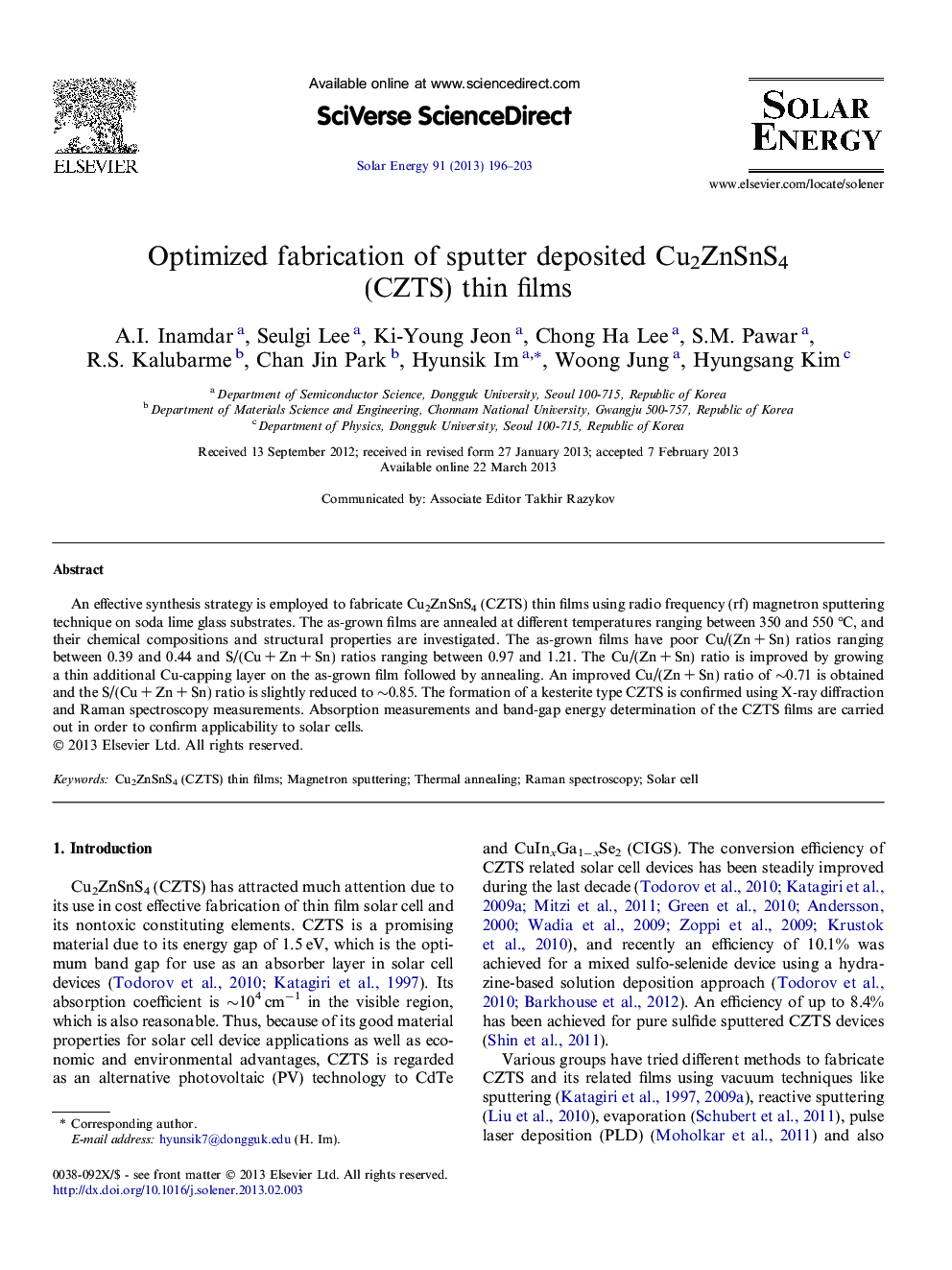| Article ID | Journal | Published Year | Pages | File Type |
|---|---|---|---|---|
| 1550408 | Solar Energy | 2013 | 8 Pages |
An effective synthesis strategy is employed to fabricate Cu2ZnSnS4 (CZTS) thin films using radio frequency (rf) magnetron sputtering technique on soda lime glass substrates. The as-grown films are annealed at different temperatures ranging between 350 and 550 °C, and their chemical compositions and structural properties are investigated. The as-grown films have poor Cu/(Zn + Sn) ratios ranging between 0.39 and 0.44 and S/(Cu + Zn + Sn) ratios ranging between 0.97 and 1.21. The Cu/(Zn + Sn) ratio is improved by growing a thin additional Cu-capping layer on the as-grown film followed by annealing. An improved Cu/(Zn + Sn) ratio of ∼0.71 is obtained and the S/(Cu + Zn + Sn) ratio is slightly reduced to ∼0.85. The formation of a kesterite type CZTS is confirmed using X-ray diffraction and Raman spectroscopy measurements. Absorption measurements and band-gap energy determination of the CZTS films are carried out in order to confirm applicability to solar cells.
► Precursor CZTS films are non-stoichiometric with binary sulfide phases. ► Cu-capping (140 nm) on precursor CZTS provides near stoichiometric films. ► Raman spectroscopy reveals the formation of CZTS phase after Cu-capping. ► Cu-capped CZTS samples show an improved Cu/(Zn + Sn) ratio of ∼0.71.
